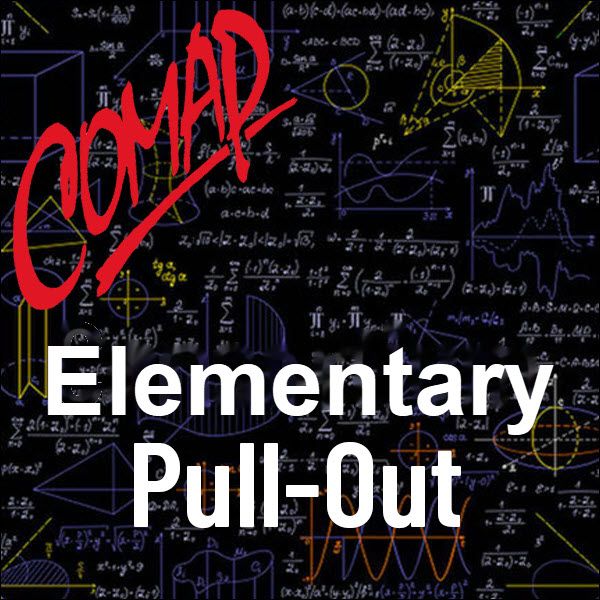Elementary Pull-Out: Geometrical Concepts and Oral Mathematics
Author: Sheila Sconiers
The Elementary Mathematician, COMAP's award-winning K-6 newsletter is available for the first time in electronic format. Each issue contains a collection of K-6 mathematic lessons that are fun to teach and exciting to learn.
Each issue of The Elementary Mathematician contains a Pull-Out section which includes thematic lessons based on the national census, wildlife, other cultures, technology, and provides a practical way to bring the concepts and pedagogy of the NCTM Standards into your classroom.
Note: The information below was created with the assistance of AI.
Level of Mathematics
Target Grade Levels: Kindergarten to 3rd Grade (K–3)
This is consistent with the UCSMP training focus mentioned in the file and the nature of the tasks:
Counting, ordinal positions, and number patterns for oral mathematics.
Recognition and exploration of geometric shapes for foundational spatial reasoning.
Application Areas
This resource integrates math across several classroom contexts:
1. Early Geometry
Enhances visual-spatial skills by having students identify and decompose shapes.
Promotes flexible thinking through changing figure orientations and embedded shapes.
2. Oral Mathematics
Encourages number sense development through verbal counting, comparisons, and contextual discussions.
Supports language-math integration—ideal for inclusive or ESL classrooms.
3. Real-Life Math Connections
Applied math questions (e.g., school transportation, apartment numbering) connect abstract concepts to daily experiences.
4. Classroom Discourse and Participation
Designed for group engagement, peer interaction, and classroom dialogue to reinforce understanding.
Prerequisites
Students engaging in these activities should have:
Basic Counting Skills: Ability to count forward and backward within 100.
Shape Recognition: Familiarity with basic 2D figures like circles, squares, triangles, rectangles.
Positional Awareness: Understanding of “before/after,” “first/last,” “left/right.”
Descriptive Vocabulary: Able to communicate observations verbally (especially in the oral math section).
Subject Matter
The resource develops two major strands:
1. Geometry Concepts
Focus on whole-figure recognition before progressing to part-whole decomposition.
Practice in identifying embedded shapes: triangles within rectangles, trapezoids in hexagons, etc.
Visual analysis through orientation changes and component counting.
2. Oral Mathematics
Verbal number patterns and sequencing (e.g., what comes after/before).
Use of real-life contexts like classroom attendance, apartment numbers, and routines.
Emphasizes interactive, language-rich math learning.
Correlation to Mathematics Standards
These activities align closely with Common Core State Standards (CCSS) for early elementary grades:
Counting and Cardinality / Operations and Algebraic Thinking (K–1)
CCSS.MATH.CONTENT.K.CC.A.1–3: Counting forward and backward.
CCSS.MATH.CONTENT.1.OA.A.1: Use addition/subtraction in word problems.
Geometry (K–2)
CCSS.MATH.CONTENT.K.G.A.2: Correctly name shapes and describe their positions.
CCSS.MATH.CONTENT.1.G.A.2: Compose two-dimensional shapes or three-dimensional shapes to create a composite shape.
CCSS.MATH.CONTENT.2.G.A.1: Recognize and draw shapes having specified attributes.
Mathematical Practices
MP2: Reason abstractly and quantitatively.
MP6: Attend to precision (especially in shape identification).
MP7: Look for and make use of structure (figures within figures).
MP3: Construct viable arguments and critique the reasoning of others (through oral discussion).

Mathematics Topics:
Application Areas:
Prerequisites:
You must have a Free Educator Membership or a paid Full Membership to download this resource.
If you're already a member, login here.